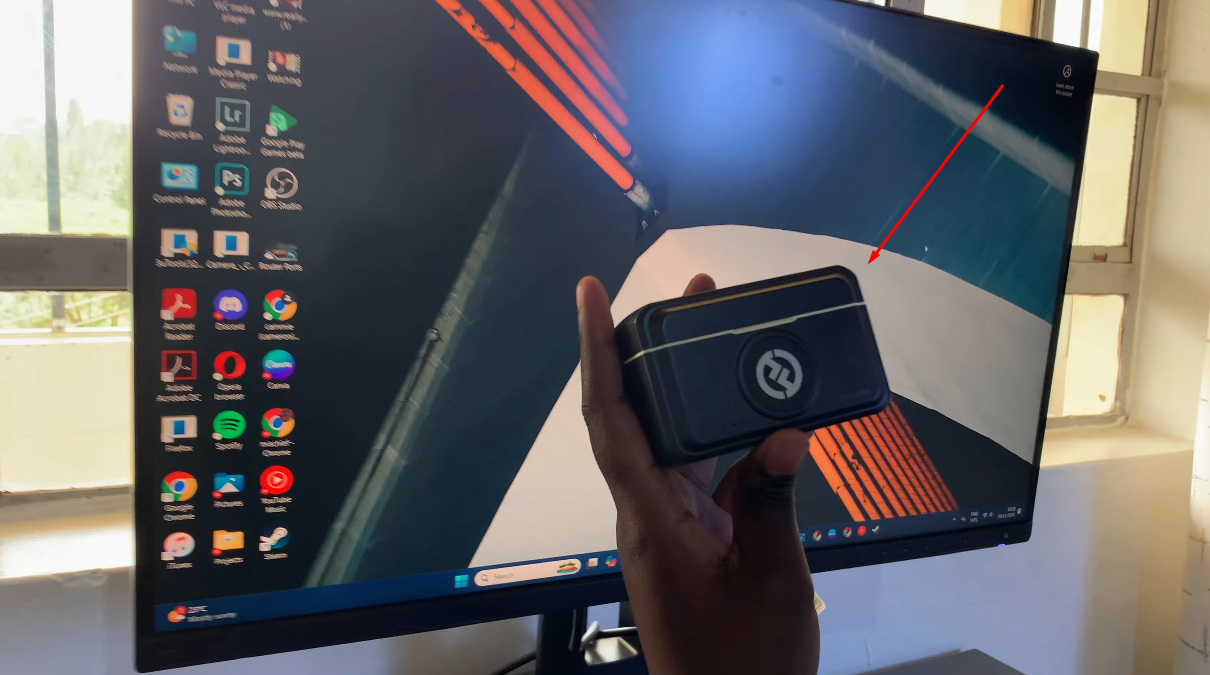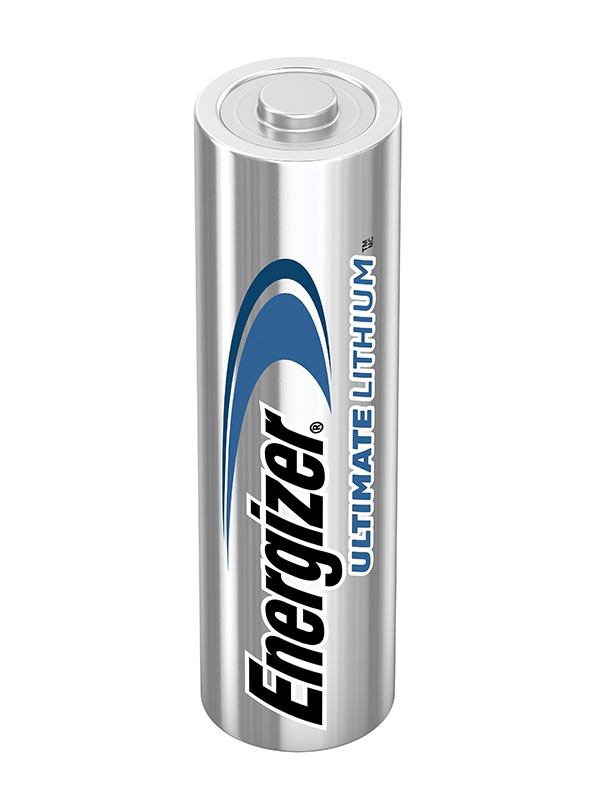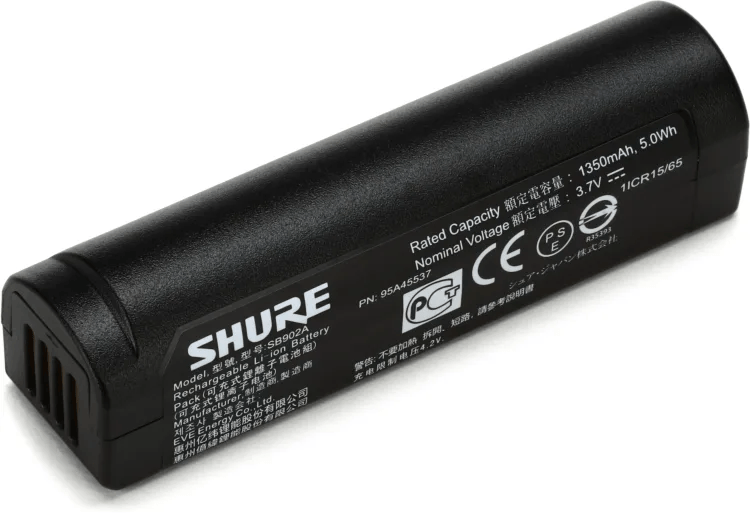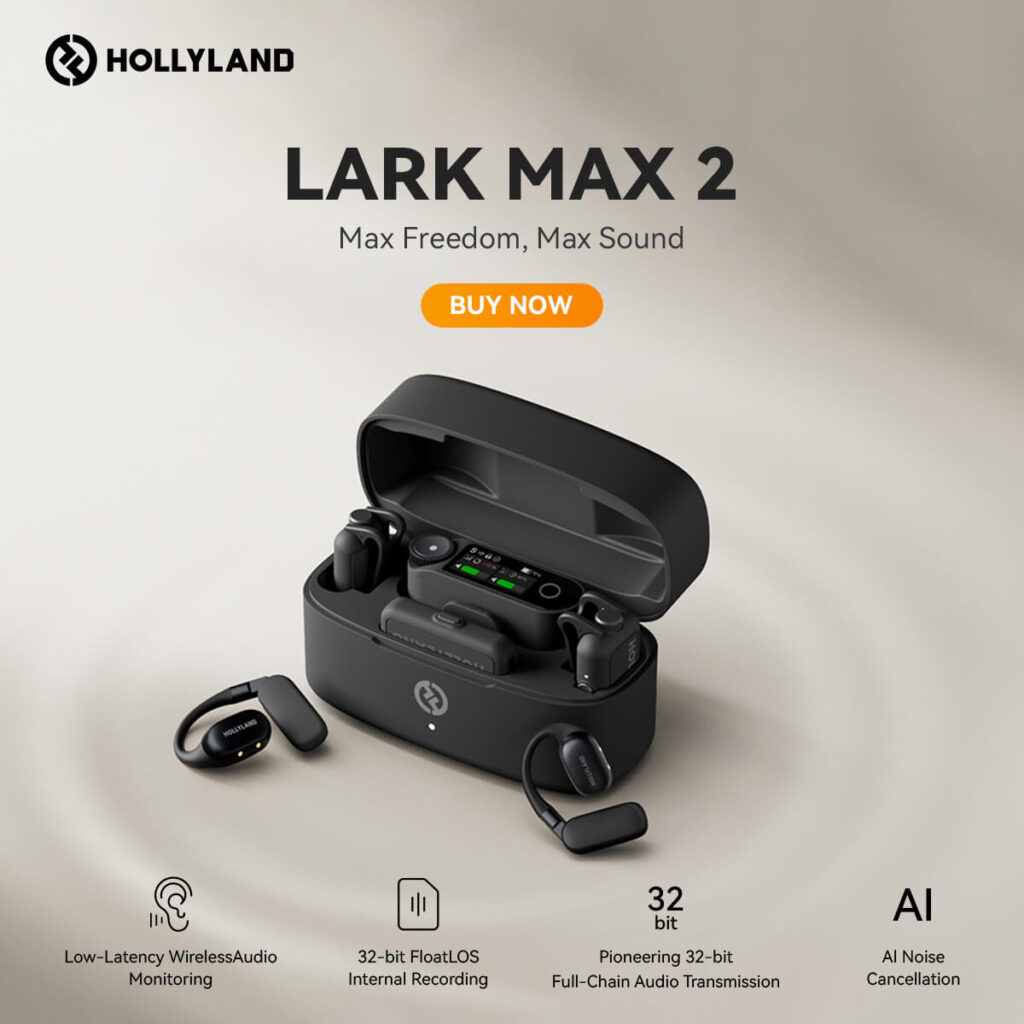Traditional wired microphones have one major drawback – tangy cables that restrict the user’s movement and force you to be extremely close to the PA system. Wireless microphones take care of this issue by allowing users to remotely not only activate but also customize how the mic works.
However, no two wireless microphone models are built the same. We’ve scoured the market for the best Bluetooth microphones, wireless systems, and hybrid wireless/wired models and have handpicked 8 top-performing models for your convenience.
This article includes in-depth objective-focused reviews of the finest wireless microphones available in 2024, as well as a comprehensive guide on how to choose a model that suits your needs. Without any further ado, let’s begin with a quick comparison.
Wireless Microphone Comparison
| Microphone | Dimensions | Frequency Response | Battery Life | Wireless Range | Price |
| Hollyland Lark C1 | 1.1 x 1.9 x 0.4 inches | 20 Hz to 20 kHz | 8 hours, 32 hours with the charging case | 656.2 feet | $99 |
| BOYA BY-V20 | 2.05 x 0.69 x 0.63 inches | 20 Hz to 16 kHz | 9 hours | 164 feet | $39 |
| RØDE Wireless ME | 1.7 x 1.8 x 0.7 inches | 20 Hz to 20 kHz | 7 hours | 328.1 feet | $149 |
| SmallRig Wave W1-C | 2.4 x 0.7 x 0.4 inches | 20 Hz to 20 kHz | 5 hours, 35 with the charging case | 328.1 feet | $89 |
| JBL PartyBox Wireless Mic | 1.7 x 3.8 x 0.7 inches | 50 Hz to 15 kHz | 12 hours | 98.4 feet | $149 |
| Shure BLX288/PG58 | 2.5 x 4.3 x 0.8 inches | 50 Hz to 16 kHz | 14 hours | 300 feet | $549 |
| Galaxy Audio GTU-SHP5AB | 1.4 x 4.5 x 10 inches | 80 Hz to 15 kHz | 6 hours | 160 feet | $99 |
| SYNCO G2Wireless Lavalier Microphone | 2 x 1.7 x 0.7 inches | 50 Hz to 20 kHz | 8 hours | 492 feet | $139 |
8 Best Wireless Microphones Reviewed
Hollyland Lark C1

Key Specs:
- Measures 1.1 x 1.9 x 0.4 inches
- Weighs 0.2 ounces
- Omnidirectional pattern
- Wireless range: 656.2 feet
- Battery life: 8 hours for transmitters, 32 hours with charging case
- Frequency Response from 20 Hz to 20 kHz
Hollyland’s prized Lark C1 is debatably one of the most flexible wireless microphones in the contemporary market, brandishing a superior effective range, a pocket-sized design, exceptional battery life, and pristinely clear audio performance.
More specifically, this microphone is capable of recording at 48 kHz with a 16-bit sampling rate. Otherwise known as “lossless” audio, sounds captured with this petite device are as vivid and authentic as they can be.
Lark C1 will retain optimal functionality even if the transmitter is over 650+ feet away from the receiver. Journalists, interviewers, podcasters, vloggers, and content creators alike adore this wireless microphone, as it can be carried anywhere – it weighs only 0.2 ounces and is barely over an inch in size.
The internal battery of Hollyland’s Lark C1 can withstand 8 hours of sustained use. If connected to the charging case, the microphone can continue working for 24 additional hours while requiring only 1.5 hours to fully recover its charge.
Lark C1 is a beginner-friendly microphone, courtesy of the LarkSound companion app that was specifically designed to amplify the customizability of Lark Series devices. Users can seamlessly tailor a range of parameters, such as Speaker Play, volume levels across connected devices, choose from two available noise cancelation settings, and more from their phone.
Overall, Hollyland Lark C1 offers a well-rounded performance, raises the bar for long-running, long-distance wireless microphones, and comes at a highly affordable price, making it deserving of our “Best Overall” title.
Pros:
- Phenomenal effective range and runtime
- Captures high-quality audio
- Multiple active noise cancelation presets
- Neutral frequency range
- Inexpensive and beginner-friendly
Cons:
- Not overly durable
Price: $99
BOYA BY-V20

Key Specs:
- Measures 2.05 x 0.69 x 0.63 inches
- Weighs 0.3 ounces
- Omnidirectional pattern
- Wireless range: 164 feet
- Battery life: 9 hours
- Frequency Response from 20 Hz to 16 kHz
A cheap pair of easy-to-use wireless microphones to some, a convenient tool for content creators on the go, and an excellent choice for journalists on a budget, Boya BY-V20 wears many hats and is our top low-end wireless microphone choice.
First of all, Boya BY-V20 features two transmitters with integrated omnidirectional microphones with a decently sized form factor. Although the system does not feature active noise cancelation technology, it tackles unwanted sounds by filtering the highest frequencies out.
Its effective range of roughly 164 feet may sound unimpressive compared to Lark C1, but it enables the user to dependably capture sounds at mid-range even if minor obstacles are in the way.
The omnidirectional polar pattern of BY-V20 allows professionals to record voices or sounds from multiple targets at once. This pair of wireless microphones can be good for bands recording a rehearsal, one-on-one podcast shows, and influencers, but it is best utilized in more controlled environments, preferably indoors.
Overall, Boya’s BY-V20 is a phenomenal low-cost choice, offering high audio quality relative to similarly-priced alternatives and a good runtime of about 9 hours, but it might not be perfectly suited for professional use.
Pros:
- High-quality at a low cost
- Comes equipped with two transmitters with inbuilt omni microphones
- Small and lightweight
- Reduced top-end frequency response for improved clarity in harsh conditions
- Decent battery charge
Cons:
- No noise canceling
- Incompatible with mobile apps
Price: $39
RØDE Wireless ME

Key Specs:
- Measures 1.7 x 1.8 x 0.7 inches
- Weighs 1.1 ounces
- Supercardioid pattern
- Wireless range: 328.1 feet
- Battery life: 7 hours
- Frequency Response from 20 Hz to 20 kHz
Rode has been synonymous with quality for over half a century, pioneering one innovation after another. One of their latest models is the critically acclaimed Wireless ME packed with state-of-the-art features and technologies.
Wireless ME delivers professional-grade audio quality leagues above competing alternatives, courtesy of the brand’s proprietary GainAssist tech. This feature deploys sophisticated algorithms to filter incoming audio before unleashing the gently compressed, accurately processed, and highly customizable sound into the airwaves.
The microphone will flawlessly operate up to 328.1 feet thanks to the advanced digital 2.4 GHz wireless connectivity. Users can flexibly choose how to deploy this mic, as its tiny design can fit virtually anywhere.
Although its battery life of 7 hours per charge may seem slightly inferior to what top-of-the-line wireless microphones have to offer, Rode’s Wireless ME is powered by rechargeable Li-Ion batteries that deliver a remarkably stable performance at all times.
Podcasters, creators, entertainers, vloggers, and social media influencers are harnessing the full power of Wireless ME by connecting it to its companion app, Rode Connect. This software is a dedicated live-streaming solution, capable of syncing multiple microphone outputs to a single device, providing seamless monitoring and customization from a unified source.
Rode Wireless ME helps redefine the meaning of convenience and versatility and wireless recordings, and even though it’s just slightly more expensive than the Lark C1, it’s an excellent professional choice.
Pros:
- Very high audio quality
- Fully 128-bit encrypted recordings
- Multiple mounting options, including shoe mount and belt clip
- Flat frequency response for optimal versatility
- Rechargeable Li-Ion battery
Cons:
- Mediocre charge runtime
- The app only works on the latest software
Price: $149
SmallRig Wave W1-C

Key Specs:
- Measures 2.4 x 0.7 x 0.4 inches
- Weighs 2.7 ounces
- Omnidirectional pattern
- Wireless range: 328.1 feet
- Battery life: 5 hours, 35 with the charging case
- Frequency Response from 20 Hz to 20 kHz
We’re looking at SmallRig’s Wave W1-C, the embodiment of quality in the low-end wireless microphone category. Its affordability is only matched by its long wireless range, superb audio resolution, and virtually weightless design.
One of the main selling points of Wave W1-C lies in its high portability. Less than an inch in width and length and less than an ounce in weight, this wireless microphone exemplifies what SmallRig stands about – equipping users with compact, dependable solutions that can be used and carried anywhere.
The charge runtime of W1-C spans only 5 hours, but if the microphone is connected to the charging case, it can sustain up to a whopping 35 hours of continuous use – eclipsing the performance of similarly-priced models several times over.
Unfortunately, W1-C’s design is not flawless. Its estimated latency can reach up to 10 ms while its total harmonic distortion normally floats below 0.15%. These values may appear negligible to hobbyists and recreational users, but professionals will certainly notice.
All things considered, SmallRig’s W1-C is more than just an alternative to the cheap Boya BY-V20. They’re both great for users on a cash-strapped budget, but W1-C offers a broad palette of different benefits – from superb battery life (with the charging case) and 48 kHz audio resolution to ultra-lightweight design.
Pros:
- Almost professional-worthy recording quality
- Good wireless range with high tolerance to minor interferences
- Small, light, and decently durable
- Clip-on mounting
- Highly affordable
Cons:
- Minor latency and distortion
Price: $89
JBL PartyBox Wireless Mic

Key Specs:
- Measures 1.7 x 3.8 x 0.7 inches
- Weighs 1.5 ounces
- Cardioid pattern
- Wireless range: 98.4 feet
- Battery life: 12 hours
- Frequency Response from 50 Hz to 15 kHz
JBL is widely known for making top-grade portable speakers, headphones, and earbuds, but they’re probably not the first brand that comes to mind when we’re talking about wireless microphones.
After launching a few karaoke mics, which are typically bundled with their transportable speakers, JBL broke new ground with the rapidly trending PartyBox wireless microphone pair. These microphones bring the convenience of Bluetooth connectivity up to 98.4 feet, a fairly strong battery runtime of six hours per mic, and a beginner-friendly mode of operation.
What sets these wireless microphones apart from popular alternatives is their crisp audio performance. This model was custom-tuned to pick up on frequencies ranging from 50 Hz to 15 kHz, brushing off the deepest bass and the brightest highs before they even enter the mix.
The integrated pop filter and shock mount serve as passive (unwanted) noise-canceling features, helping the PartyBox mic provide smooth, consistent performance.
Although these wireless mics work best with JBL speaker hardware, they are compatible with virtually all Bluetooth-enabled devices thanks to the pocket-sized wireless receiver.
JBL’s PartyBox microphone set is a perfect choice for casual singers and karaoke, but content creators, influencers, and interviewers love it almost just as much. The mic was recently dubbed the “#1 New Release” in Amazon’s handheld wireless microphone category and is rapidly soaring in popularity.
Pros:
- Highly customizable crisp audio performance
- Narrow frequency range and inbuilt filters keep unwanted noises away
- The batteries last long and are easy to replace
- 10-minute quick-charge gives the transmitter two extra hours of runtime
- Well-built and sturdy
Cons:
- Slightly colored sonic signature
- Relatively low effective range compared to alternatives
Price: $149
Shure BLX288/PG58

Key Specs:
- Measures 2.5 x 4.3 x 0.8 inches
- Weighs 7.7 ounces
- Cardioid pattern
- Wireless range: 300 feet
- Battery life: 14 hours
- Frequency Response from 50 Hz to 16 kHz
Shure exemplifies accurate engineering and is best known for creating specialized microphones for all industries and niches. The BLX288/PG58 is one of the brand’s most recent high-end wireless systems designed to help public speakers and vocalists sound their best at all times.
This combo comprises a dual-channel transmitter for the two PG58 wireless microphones, complete with inputs for wireless instruments and the auto-scan frequency feature. The latter is particularly useful for users who typically work in previously unexplored environments, especially if you’re trying to find a good signal indoors.
The PG58 microphones boast an inbuilt pop filter, a robust base made of durable metal materials, and a customized frequency range from 50 Hz to 16 kHz, which is strikingly similar to JBL’s PartyBox mic.
The cardioid polar pattern coupled with a sizable form factor makes these microphones ideal for musicians. The BLX288/PG58 system is great for home music studios, micking band rehearsals, and recording live shows.
Everything Shure’s BLX288/PG58 has to offer, including a long wireless range, smooth operation, and terrific audio quality, can reach even greater heights with the ShurePlus app.
Pros:
- Very good for bands and live musicians; perfect for vocalists
- Excellent wireless range with zero latency or interference
- Automatic frequency scanner
- Two separately configurable channels
- Long-lasting batteries that are easy to replace
- Superb audio quality
Cons:
- Quite expensive
Price: $549
Galaxy Audio GTU-SHP5AB

Key Specs:
- Measures 1.4 x 4.5 x 10 inches
- Weighs 2.8 ounces
- Cardioid pattern
- Wireless range: 160 feet
- Battery life: 6 hours
- Frequency Response from 80 Hz to 15 kHz
Galaxy Audio GTU-SHP5AB is a well-rounded, highly affordable wireless microphone that can fit a range of diverse roles. From recording the sound of public speakers, podcast guests, or interviewees to capturing the tone of instruments amplifying the vocal prowess of singers, and beyond, this versatile device can do it all.
One of the main draws of the GTU-SHP5AB lies in the fact that users can choose whichever microphone type they want to include in the system, whether it be a lavalier, headset, a handheld microphone, or a combination, Galaxy Audio allows customers to mix and match until they find a bundle that suits their needs.
Regardless of which type is chosen, all GTU mics share roughly the same, powerful specs. They boast a cardioid pickup pattern, automatic frequency scanning, an effective wireless range of 160 feet, and close to zero harmonic distortion.
Similar to wireless microphones we’ve previously covered, the GTU-SHP5AB has a custom-tuned frequency response range from 80 Hz to 15 kHz, taking the extremes out of the picture.
The lavalier is the smallest of the three options while even the “bulkiest” handheld mic is fairly light at 2.4 ounces. All Galaxy Audio GTU microphones boast six hours of reliable runtime and require barely over one hour to fully revitalize.
Pros:
- Three microphone types available as standalone or bundle options
- Lightweight and remarkably durable for a compact microphone
- Very easy to use and install
- Automatic pairing to the best channel available
Cons:
- Slightly inferior wireless range when compared to popular alternatives
Price: $99
SYNCO G2/A2 Wireless Lavalier Microphone

Key Specs:
- Measures 2 x 1.7 x 0.7 inches
- Weighs 1.4 ounces
- Omnidirectional pattern
- Wireless range: 492 feet
- Battery life: 8 hours
- Frequency Response from 50 Hz to 20 kHz
Let’s wrap up our review of the best wireless microphones you can find in 2024 with Synco’s G2/A2 lavalier mic.
Ultra-portable, good-sounding, and decently affordable, G2/A2 is taking the social media space by storm, held in high regard by numerous podcasters, influencers, content creators, vloggers, and other creatives.
What helps SYNCO’s G2/A2 stand apart from similarly-priced models is proprietary encryption technology, which fully negates the risk of eavesdroppers hopping onto the user’s wireless frequency and listening in on your conversations.
Once fully charged, G2/A2 can last up to eight hours of continuous use, and it only needs a little over an hour to recharge.
Overall, this microphone costs just slightly more than an average budget wireless model, but it brings a range of upgrades to the table – from an impressive wireless range of 492 feet, semi-neutral frequency response from 50-20,000 Hz to up to 8 hours of runtime per charge and merely 1.4 ounces of weight.
Pros:
- Portable and lightweight
- Excellent wireless range and audio quality for the price
- Lasts long and recharges quickly
- Streamlined setup and compatibility with most USB-powered devices
- Features two 3.5mm jacks for recording instruments
Cons:
- Relatively frail plastic construction
Price: $139
How We Ranked the Best Wireless Microphones
A world of differences stands between a low-cost microphone capable of wireless connectivity and a comprehensive system equipped with multiple recording tracks and cutting-edge software.
While searching for the best wireless mics, we swept across the market hunting the latest innovations from all-popular brands like Shure, Rode, and Hollyland, but we also uncovered a few hidden gems from underdogs such as SmallRig and Synco.
Below is a short list of the main features, elements, and benefits we were searching for in wireless microphones:
- Reliability: some experts deem wireless microphones inferior to their wired counterparts because the lack of a direct signal path may adversely impact the audio quality. This is the reason why we only recommend models that offer pristinely clear performance and consistent reliability.
- Audio quality: throughout our search for the best wireless microphones, we hunted models that support the highest quality lossless audio resolution.
- Ease of use and installation: many people are reluctant to try wireless microphones because some models are difficult to set up properly. The microphones we recommend are as beginner-friendly as they come, brandishing plug-and-play and/or auto-pairing functions that ensure anyone can efficiently use them.
- Long runtime: unlike wired microphones, wireless mics typically operate on batteries and can last a set amount of time before needing to recharge. We’ve handpicked the ones that can sustain hours of continuous use, or even a full day when connected to the charging case.
- Effective range: not all users need a long-range wireless microphone that can work over 1,000+ feet away from the base, but some professionals do. This is why we’ve included models that offer different levels of effective wireless range, from as low as 98.4 feet (JBL PartyBox Wireless Mic) to as high as 656.2 feet (Hollyland Lark C1).
- App compatibility: one of the main reasons why anyone would upgrade to a wireless microphone is the opportunity to customize the mic’s performance through an app. Remote fine-tuning is far more practical than manual, so we looked for models that are compatible with popular mobile apps (or even feature companion apps like Lark Sound or Rode Connect).
- Device compatibility: most wireless microphones can be held in hand or are small enough to fit inside a pocket, but what if you were mainly looking for a mic that can improve how your other devices sound? We shortlisted some of the best microphones that can be used with popular cameras, smartphones, and camcorders, whether via direct wired pairing or wireless (Bluetooth) connection.
- Price: not all microphone buyers can afford the latest Shure systems costing over $500. Conversely, professionals would hardly find any value in ultra-cheap microphones like Boya BY-V20 or SmallRig’s Wave W1-C. Our selection includes some of the finest representatives of each price point category, from the most affordable low end, over the more accessible mid-range, to the boutique top-end for seasoned pros.
Conclusion
A good wireless microphone offers reliable interference-free performance at a solid range, can last several hours away from the base, and should deliver crisp, uncolored recordings. This “broad” definition can cover hundreds of different microphones, so it’s up to you to determine which elements you value the most – range, sustained recordings, audio quality, or device compatibility.
Fortunately, you won’t have to trade convenience for power or long battery lifetime for app support, as several wireless microphones can do it all. We’ve handpicked 8 models from leading microphone manufacturers we deem are the best, so consult our buying guide and FAQs and choose the one that fits your needs and budget.
If you’re looking for hands-free convenience and crystal-clear audio quality, consider investing in a wireless lavalier microphone. Ideal for interviews, presentations, and vlogging, it allows you to capture professional-level sound without limiting your mobility.
Best Seller
Sale
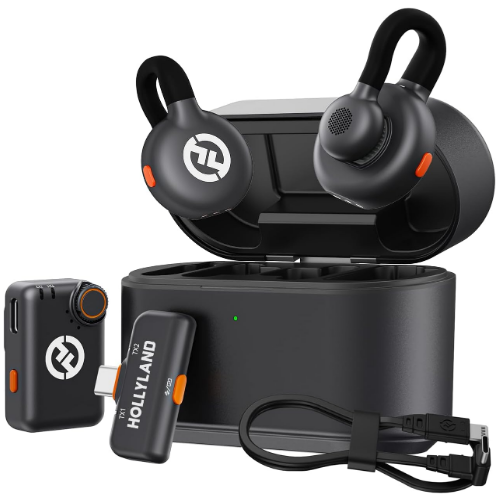
Hollyland LARK M2S – Wireless Clip-on Microphone
- 7g Lightweight, Titanium Clip, Discreet Design
- Clear sound with 24-bit/48kHz, 70dB SNR, 116dB SPL
- Noise Cancellation & 300m Long-Range Stability
- Works with Camera/iPhone/Android/Laptop
- Perfect for Content Creators, Online-Teaching, Streaming
$139
$159
FAQs
What are wireless microphones and how do they work?
Wireless microphones convert audio signals into radio signals, which are transferred from the microphone (transmitter) to the base (receiver). The vast majority of wireless mics utilize the latest Bluetooth technology to pair to their receivers.
Who makes the best wireless microphone?
Some of the most renowned manufacturers of wireless microphones and WM systems are Hollyland, Shure, and Rode, although many popular alternatives exist, such as Audio Technica, Sennheiser, Audix, Samson, and AKG.
Are wireless microphone systems worth it?
Wireless microphones tackle some of the major pain points users of wired mics face, such as limited mobility, poor durability of cables, and no app support. They can be extremely valuable to professionals from all industries, especially content creators, influencers, podcasters, speakers, and DJs on the go.
Do all wireless microphones run on batteries?
Virtually all wireless microphones draw power from batteries, which can be rechargeable or non-rechargeable (replaceable). Battery types vary in capacity, with the weakest mainstream options being Ni-Cd (Nickel-Cadmium) and the strongest being Lithium.
How far can wireless microphone receivers reach?
The standard range of wireless microphone systems may vary from one manufacturer to another. The lowest range most users are satisfied with is roughly 90 feet while some professionals prefer long-range systems that can reach over 600+ feet with no interference.
How much can a wireless microphone cost?
Some of the cheapest high-quality wireless microphones on the market can be found under $50 (e.g. BOYA BY-V20) while more comprehensive systems with top-quality features and audio performance can cost well over $500 (e.g. Shure BLX288/PG58).





























.png)


